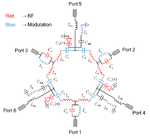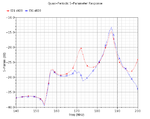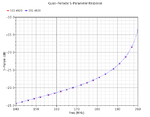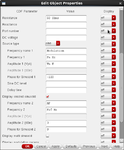EduardoGS
Newbie level 5
S-parameters from a RF Circuit - Circulator created from LC resonators
Hello everyone.
I am trying to simulate, for my undergraduate thesis, a new RF circulator that was published by Nature Physics on article called "Magnetic-free non-reciprocity and isolation based on parametrically modulated coupled-resonator loops".
My doubt is how to create a setup that understands one RF signal (sweep from 140MHz to 200Mhz) modulated by a signal with fixed frequency (15Mhz) and that has phase 120º difference between each one. After this, my goal is to plot S parameters and see the transmission from port 1 to ports 2 and 3. My curent setup in Cadence Virtuoso use QPSS and QPSP. In ADS2011, my curent setup use HB Simulation. On both cases the results are not good.
I have the article and I can send to you to read and understand better the problem if you wish.
Best regards.
Hello everyone.
I am trying to simulate, for my undergraduate thesis, a new RF circulator that was published by Nature Physics on article called "Magnetic-free non-reciprocity and isolation based on parametrically modulated coupled-resonator loops".
My doubt is how to create a setup that understands one RF signal (sweep from 140MHz to 200Mhz) modulated by a signal with fixed frequency (15Mhz) and that has phase 120º difference between each one. After this, my goal is to plot S parameters and see the transmission from port 1 to ports 2 and 3. My curent setup in Cadence Virtuoso use QPSS and QPSP. In ADS2011, my curent setup use HB Simulation. On both cases the results are not good.
I have the article and I can send to you to read and understand better the problem if you wish.
Best regards.
Last edited:






